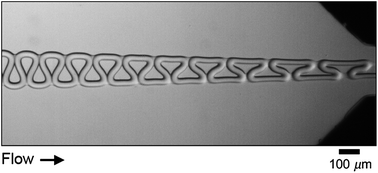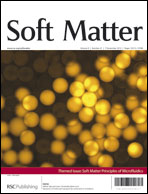Formation of capillary structures with highly viscous fluids in plane microchannels
Abstract
A detailed experimental study of capillary structures made with high-viscosity fluids is conducted in plane microchannels. We examine the possibility to emulsify fluids via viscous folding instabilities using continuous microflows. Non-wetting capillary threads are formed in a sheath of immiscible liquids for a wide range of viscosity and flow rate ratios using symmetric hydrodynamic focusing sections. Downstream, threads are significantly deformed in a diverging channel connected to a long plane microchannel. Adjusting the residence time of thread structures in the plane channel allows us to produce various degrees of fold coalescence. Three typical regimes are identified: thread breakup, partial fold coalescence, and complete fold coalescence. The geometrical features of evolving folds are measured and related to material properties, flow parameters, and microgeometries. This study shows that folded structures offer the opportunity to examine novel interfacial configurations and provides a set of microfluidic techniques for improved manipulation of viscous materials with thin immiscible lubricants at the small scale.

- This article is part of the themed collection: Soft matter principles of microfluidics.

 Please wait while we load your content...
Please wait while we load your content...